| During our first visit to Shepherdstown we had visited
nearby Antietem, one of the major Civil War battle sites, so this time it
seemed appropriate that we should travel north a little to Gettysburg. It
begins to look like a history trip. Once camped we got out the bikes and
cycled some of the 27 miles of war trails in the area. These are Confederate
guns. | 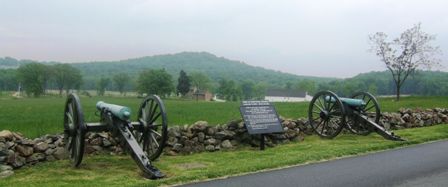 |
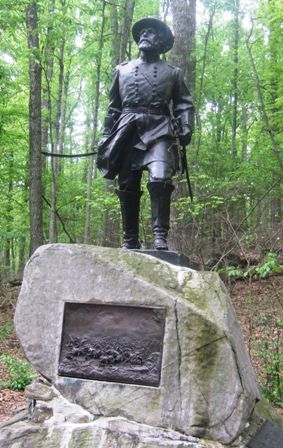 |
It seems that every few yards there is a memorial for some group or other on
one side or the other. This was a Union cavalryman Major William Wells from
Vermont. He later became a major general. He won the medal of honour at
Gettysburg. |
| The plaque at the bottom shows the cavalry charge in
sort of 2.5D. A beautiful piece of sculpture. | 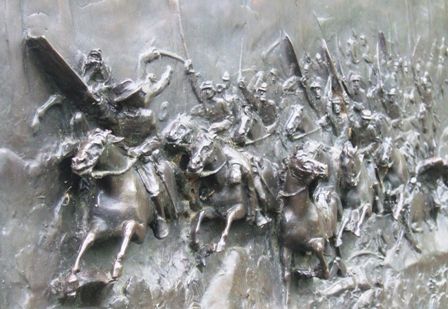 |
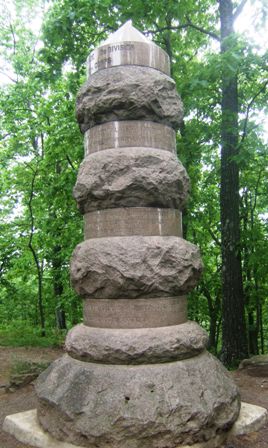 |
One of the major points on the battlefield was the hill called Big Round
Top. It must have been a major viewing platform for the Union officers. This
is one of the 121 monuments to Pennsylvanian troops in the battlefield. |
| Now we are on Little Round Top, held by the Union (but
only just), looking out towards the Confederate lines and over an area known
as the Valley of Death. | 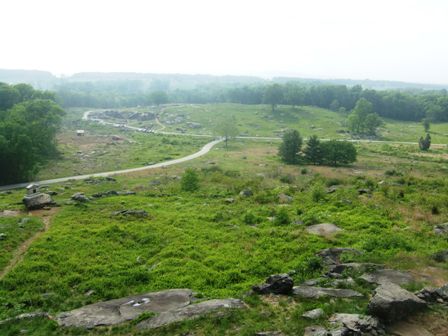 |
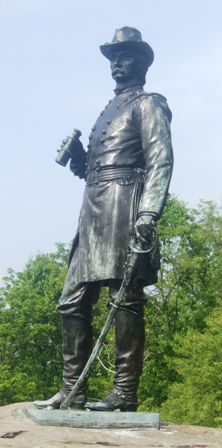 |
Gen. Gouverneur K. Warren was chief engineer of
the Union Army of the Potomac. He discovered Little Round Top was undefended
and, recognising its strategic importance, quickly arranged its defence just
prior to its first being attacked by the Confederates. A very intelligent
and cautious commander, he was later deposed by a fiery officer who was
subsequently found to have been wrong, but Warren's career was ruined. |
| Very typical battlefield defences were made with split
timbers and known as a Virginia split rail fence. We will later find these
were not a military invention, as thought at the time, but were in use in
Virginia over 200 years earlier, mainly to keep animals away from crops. | 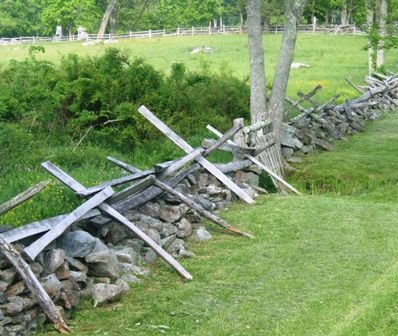 |
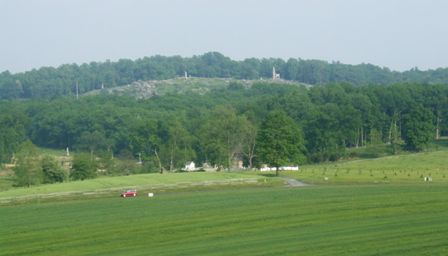 |
This is Little Round Top as seen from the Confederate lines showing just how
strategically important it was. Remember that there were many fewer trees at
that time. |
| Another of the numerous memorials. Virtually every
company has its own memorial. | 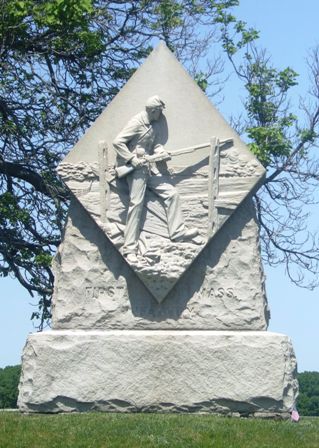 |
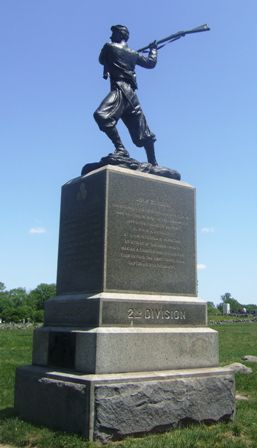 |
Some like the one above have no details but others have great detail on who
was present and how many killed and wounded there were. This varies
enormously with casualties as few as 10% to some units with 80%. The 26th
North Carolinas lost 714 out 800. 63 Union regiments lost over 50%. In
contrast the charge of the Light Brigade at Balaklava lost 36%. |
| The house behind the trees was much fought over. It
was a stronghold of Confederate marksmen who picked off the officers and
NCOs. The barn is a much later addition. | 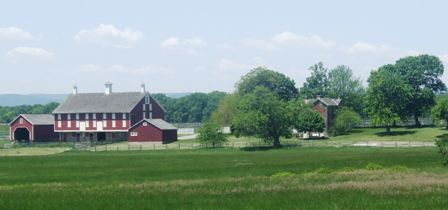 |
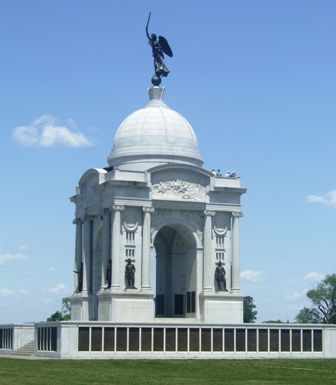 |
This is the primary Pennsylvania monument with thousands of names recorded
on it. There were 69 infantry regiments, 9 cavalry, and 7 artillery
batteries, totalling some 34530 men. Of these, 1182 were killed and 3177
wounded with 860 missing. You can climb up to a balcony just below the
cupola from where you get some excellent views. |
| As you look down you can see the Union guns and other
statues radiating off in both directions. | 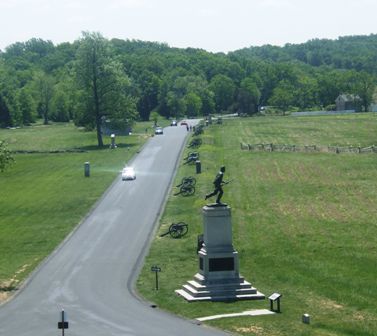 |
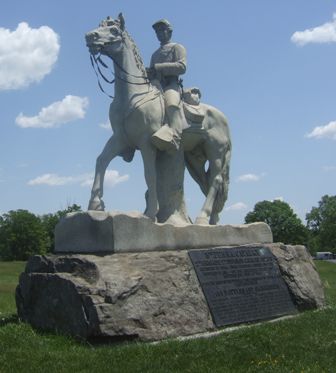 |
This is the memorial to the 8th Penna Cavalry who took part in 155 battles
and skirmishes. |
| At last we thought we had found a memorial to Indians
who took part. Not quite. This is the memorial to the 42nd New York
'Tammany' regiment who for the most part were Irish immigrants. The statue
is of Tamanend, a Lenni-Lenape chieftain (Delaware) who died in 1698. He was
a peaceful leader and was very influential at the time Philadelphia was
founded and did much to ease relations between the colonists and the native
Americans. | 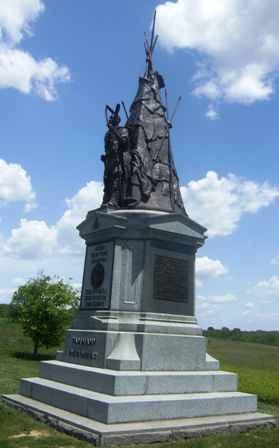 |
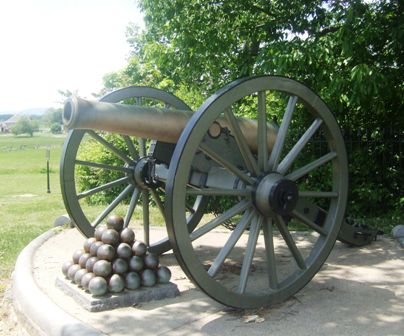 |
Artillery played a great part in the battle. Both sides used the same gun
types although the Confederate ones tended to be older. There were subtle
differences in the barrels between the 'Napoleons' and the 'Parrotts'. There
were also some with rifled barrels and some Howitzers. Most of the barrels
on the site are of the period and the information centre said that the
carriages were as well. I suspect that is not the case since I would have
expected more evidence of damage than we saw. |
| This is Major General George Gordon-Meade who was the
commander of the Army of the Potomac ie the Union side. This was a Union
victory but any battle which results in 26,000 Union and 23,000 Confederate
dead or wounded leaves me wondering who really won. The overall statistics
are even more chilling. 360,000 Union and 258,000 Confederate dead or
wounded, although only a third were due to battles. More died from disease.
More Americans died in the Civil War than in all other wars and it has left
bitter memories some of which still exist today. | 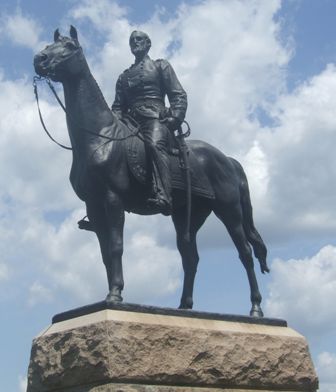 |
|